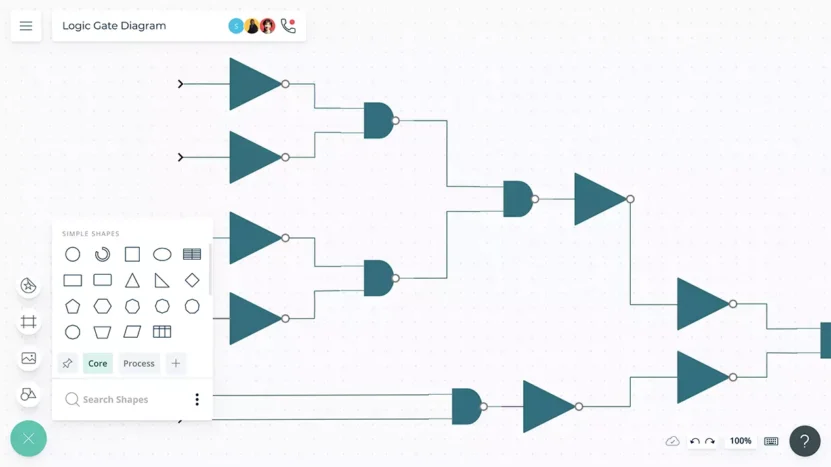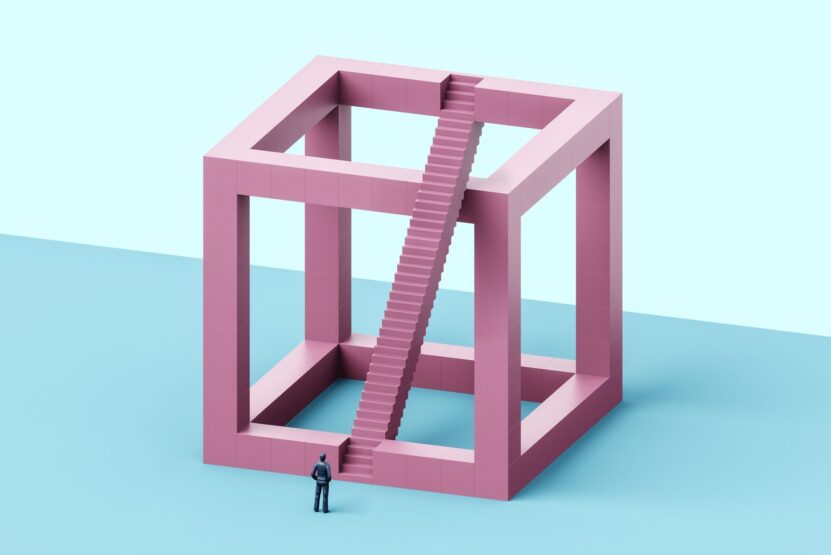In our rapidly digitizing world, the ability to understand, design, and manage processes is paramount. While the human brain is a powerful processor, complex processes, especially when interlinked, can become overwhelming.
A flowchart is a type of diagram that visually represents a process or system. It employs various shapes like rectangles, diamonds, ovals, and arrows to depict steps, decisions, start and end points, and the flow of information.
Essentially, a flowchart breaks down processes into understandable chunks and displays the sequence and relationships between these chunks. Want to find out how to make your very own charts? Zenflowchart.com is a great place to start!
Visualizing Logic

Processes, especially in sectors like IT, business, and engineering, can be convoluted. When orally explained or written in paragraphs, the essence might get lost in translation. They make it easier to follow and understand such complexities.
Aids Memory and Recall
Visual aids enhance cognitive processing. A person is more likely to remember and understand a process when it’s depicted visually, rather than being buried in mounds of text.
Facilitates Collaboration
When teams work together, ensuring that everyone is on the same page is crucial. They provide a unified reference point, bridging gaps in understanding and interpretation.
Enables Efficient Problem-Solving
They lay out a process step-by-step. Identifying bottlenecks, redundancies, or areas of inefficiency becomes much more straightforward.
Anatomy
Before diving into the prowess of flowchart makers, it’s beneficial to understand the basic components:
Shapes and Their Meanings
- Ovals: Often used to denote the start or end of a process.
- Rectangles: Signify a process or action step.
- Diamonds: Represent decision points, leading to different paths based on yes/no or true/false responses.
- Arrows: Indicate the flow of the process.
Colors and Grouping
Utilizing different colors can help in distinguishing between different types of tasks, responsibilities, or departments.
Flowchart Makers

Flowchart makers are specialized software applications designed to create them. While it’s possible to draw one manually, software tools bring efficiency, flexibility, and scalability to the table.
Features of Flowchart Makers:
- Drag and Drop Interface: Allows users to easily select and position shapes.
- Template Libraries: Pre-designed templates to jump-start the creation process.
- Collaboration Tools: Features that enable multiple users to work on a chart simultaneously.
- Customization: Ability to adjust colors, fonts, and styles.
- Export/Import: Seamless sharing across various formats and platforms.
5 Steps For Creating an Effective Flowchart
| Step | Description |
| 1 | Understanding the Goal: Determine the purpose of the flowchart, whether it’s for training, problem-solving, or process improvement. |
| 2 | Gather Relevant Information: Engage with experts, consult documentation, or conduct observations for accuracy. |
| 3 | Start Simple: Begin with a high-level overview and progressively add detail as needed. |
| 4 | Use Consistent Shapes and Colors: Maintain consistent symbols and colors for clarity, like using diamonds for decisions. |
| 5 | Test the Flowchart: Review with fresh eyes or stakeholders to identify inaccuracies or areas of confusion. |
Practical Applications
| Application | Description |
| Software Development | They aid in comprehending algorithms, programming logic, and system architecture. |
| Business Processes | They elucidate workflows, responsibilities, and decision paths across various areas such as HR and production. |
| Education | Educators employ flowcharts to simplify teaching complex subjects, helping students grasp concepts more effectively. |
| Troubleshooting Guides | Flowcharts, particularly in technical fields, assist users or technicians in systematically diagnosing and solving issues. |
The Future
The digital age continually demands clearer communication and visualization. Flowchart makers are evolving with features like real-time collaboration, integration with other tools, AI-powered auto suggestions, and virtual reality presentations.
Augmented and Virtual Reality

Imagine navigating a process in 3D, experiencing each step immersively. Such advancements aren’t just sci-fi but are on the horizon.
Integration with IoT
With devices becoming smarter, flowcharts might directly interact with devices, updating processes in real-time based on feedback.
The Rise of Intelligent Flowcharting
With the advent of AI and machine learning, flowcharting is not just about manual inputs anymore. The newest generation of chart makers can now auto-generate diagrams based on data inputs, helping to visualize vast amounts of data in an organized and coherent manner.
Data-Driven Insights
Instead of just plotting known processes, chart makers with AI capabilities can suggest process improvements or identify bottlenecks by analyzing real-time data. These insights can drastically improve efficiency and inform better decision-making.
Real-time Updates
Modern flowchart makers can adapt to real-time changes. For instance, if a company uses IoT devices in its manufacturing processes, the chart can update in real time if a machine goes offline or if there’s a change in production pace.
Challenges
While chart makers offer numerous advantages, they are not without challenges.
Over-Complexity

While trying to depict every detail, there’s a risk of creating an overwhelmingly intricate chart. Striking the right balance between detail and clarity is crucial.
Training & Familiarity
Advanced features demand a learning curve. Not everyone might be comfortable or proficient in using modern chart tools, necessitating regular training sessions.
Integration Issues
Seamless integration with other business tools is vital for maximum efficiency. Some flowchart makers might face compatibility issues, especially with legacy systems.
Best Practices
To maximize the benefits of chart makers, here are some recommended best practices:
Regularly Update
Processes evolve, and so should charts. Regularly revisiting and updating them ensures they remain relevant and effective.
User Feedback
Those who use the flowchart often have valuable feedback. Regularly gathering their insights can help in refining the chart for better clarity and efficiency.
Cloud Storage
Using cloud-based chart makers ensures that diagrams are accessible from anywhere, fostering collaboration and ensuring version control.
FAQs

What is the primary purpose of using charts in a business setting?
In a business setting, flowcharts are primarily used to visualize and understand processes, make them transparent to stakeholders, and identify areas for improvement. They can help ensure everyone understands workflow sequences, responsibilities, and decision paths, fostering better collaboration and efficiency.
Are charts only relevant for technical fields like IT and engineering?
No, flowcharts have versatile applications and are not confined to just technical fields. While they are commonly used in IT and engineering to visualize algorithms and system processes, they are equally relevant in business processes, HR workflows, education, and even creative disciplines to map out project timelines or storytelling structures.
How do AI and machine learning enhance modern chart makers?
AI and machine learning bring automation and intelligent insights to charting. They can auto-generate flowcharts based on data, suggest improvements by analyzing current processes, and even adapt flowcharts in real-time based on changing conditions or data inputs.
I’m new to flowcharts. How steep is the learning curve for modern chart makers?
Most modern flowchart makers are designed with user-friendliness in mind. They often come with drag-and-drop interfaces, template libraries, and intuitive design tools. However, while creating basic flowcharts might be straightforward, mastering advanced features and integrations may require some dedicated learning and practice.
How do cloud-based chart makers differ from traditional desktop applications?
Cloud-based flowchart makers allow users to access, edit, and collaborate on their flowcharts from any device with internet connectivity. They promote real-time collaboration, ensure version control, and often come with features like auto-save. In contrast, traditional desktop applications might be limited to a single device and might not support real-time collaboration.
With the advancements in charting, are there risks of over-reliance on these tools?
Yes, as with any tool, there’s a potential risk of over-reliance. While chart makers can simplify and visualize complex processes, it’s essential to ensure that human insight and expertise are not sidelined. Overly intricate flowcharts can sometimes complicate rather than simplify. It’s always crucial to strike a balance between automation and human judgment.
Wrapping Up
The journey of charting, from its humble beginnings as hand-drawn diagrams to sophisticated, AI-driven tools, mirrors our quest for clarity and efficiency in a complex world. Flowchart makers, with their promise of visualized logic and simplified processes, are more than just a diagramming tool.
They are the lighthouses guiding businesses and individuals through the sometimes foggy waters of intricate processes, ensuring clarity, understanding, and innovation at every turn. As the world continues to evolve, the significance and capabilities of these tools will undoubtedly soar, offering even more potent solutions for the challenges of tomorrow.
